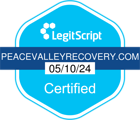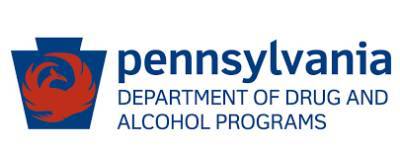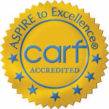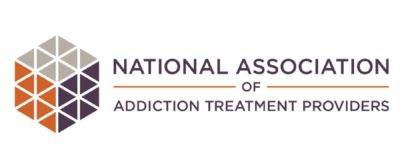Policy and Regulation Changes in Pennsylvania
![]() | Google Reviews
| Google Reviews
Peace Valley Recovery is located in Bucks County, Pennsylvania. Our mission is to provide patient-centered care that focuses on healing and recovery from addiction. This blog provides information, news, and uplifting content to help people in their recovery journey.
Authored by Chris Schumacher, | Medically Reviewed by Peace Valley Recovery Editorial Staff,
Last Updated: June 14, 2024
It should come as no surprise that underage drinking in the United States has become a serious topic of conversation. According to data released by the National Institute on Alcohol Abuse and Alcoholism (NIAAA), a staggering 13.2 million people between the ages of 12 and 20 reported they’ve had at least one drink in their lives. While that may not be too alarming, the prevalence of regular drinking was higher than anticipated, with 5.8 million people in the age group admitting to drinking within the past month. Another 3.2 million people reported binge drinking, which is defined as the consumption of an excessive amount of alcohol in a short period.
Unfortunately, Pennsylvania is not immune to this problem. The Pennsylvania Liquor Control Board (PLCB) recently released its biennial Report on Underage and High-Risk Drinking, which highlights current trends and rates of consumption for underage drinkers. It also outlines statewide education and prevention initiatives used to address these significant alcohol-related issues. It found that approximately 4.2 million 12-to-20-year-olds reported binge drinking in the last month in the state. It also highlighted the need for prevention services among youth in grades 6, 8, 10, and 12.
According to PLCB Chairman Tim Holden, “This report always provides a fascinating look into alcohol use patterns and trends among young people across Pennsylvania. It also helps provide a road map of how parents, guardians, teachers, and other community stakeholders can begin to address challenges presented by underage and dangerous drinking.”
What’s being done? What policy and regulation changes are taking place in Pennsylvania?
Understanding the Problem: The Impact of Underage and High-Risk Drinking
Alcohol is the most widely used substance among youth in America, with significant consequences. Underage drinking is linked to deaths from alcohol poisoning, suicide, homicide, and motor vehicle crashes. It also contributes to risky sexual behavior, family, school, or legal problems, and can alter brain development. The human brain isn’t fully developed until the mid-to late-20s, making adolescents particularly susceptible to risky behaviors due to an underdeveloped prefrontal cortex, the brain region responsible for planning and impulse control.
According to the 2019 National Survey on Drug Use and Health, more adolescent girls reported past-month alcohol use and binge drinking than boys. Adolescents are also more likely to use alcohol than tobacco or marijuana, underscoring the urgent need for targeted interventions.

Recognizing that the human brain does not fully mature until the mid-to-late 20s, it’s evident that adolescents are particularly vulnerable to the effects of alcohol. The prefrontal cortex, responsible for planning and impulse control, is still developing, making teens more prone to risky behaviors without fully comprehending the potential consequences.
Proactive Measures by the Pennsylvania Liquor Control Board
The PLCB has been at the forefront of initiatives to curb underage and high-risk drinking. Their strategy involves a comprehensive blend of education, enforcement, and community engagement. The PLCB’s Bureau of Alcohol Education aims to lead in reducing alcohol misuse through innovative programs and partnerships.
One of the first lines of defense against underage drinking is the training provided to Fine Wine & Good Spirits store associates. These personnel are trained meticulously to verify the age of purchasers and to identify signs of impairment. In addition to these measures, the Responsible Alcohol Management Program (RAMP) educates liquor licensees and their employees on responsible alcohol service, detection of fraudulent identification, and handling visibly intoxicated persons.
Grants and Community Involvement
The PLCB’s efforts extend beyond training to substantial financial support for various programs through the Reducing Underage and Dangerous Drinking (RUDD) Grants. These grants authorize schools, community organizations, municipalities, law enforcement, nonprofits, and institutions of higher education to implement evidence-based strategies aimed at reducing alcohol misuse.
One such example is through increased police patrols and social norms campaigns funded by these grants help create environments where underage drinking is actively discouraged. Colleges utilize these funds to conduct alcohol assessments, develop educational programs, and train peer leaders to influence their classmates positively.
Adapting to Today’s Challenges
The landscape of underage alcohol consumption is evolving, especially with the prevalence of social media, and the PLCB is continuously adapting its strategies to address new trends. The proliferation of high-ABV beers, alcopops, alcohol slushies, and the dangerous practice of creating “borgs” (blackout rage gallons) are modern challenges that the PLCB is keenly aware of. These trends facilitate binge drinking and pose severe health risks.
To combat these, the PLCB focuses on comprehensive education about the dangers of these beverages and practices. They provide training not only to their staff but also to community leaders and educators to ensure that the message reaches those most at risk.
Grants and Community Involvement
The PLCB’s efforts extend beyond training to substantial financial support for various programs through the Reducing Underage and Dangerous Drinking (RUDD) Grants. These grants authorize schools, community organizations, municipalities, law enforcement, nonprofits, and institutions of higher education to implement evidence-based strategies aimed at reducing alcohol misuse.
One such example is through increased police patrols and social norms campaigns funded by these grants help create environments where underage drinking is actively discouraged. Colleges utilize these funds to conduct alcohol assessments, develop educational programs, and train peer leaders to influence their classmates positively.
Collaborative Efforts
Addressing underage and high-risk drinking is not a solitary effort but a collaborative one. The PLCB works closely with various state agencies such as the Pennsylvania State Police Bureau of Liquor Control Enforcement (BLCE), the Department of Drug and Alcohol Programs (DDAP), and the Department of Education (PDE), among others. These collaborations ensure a unified and effective approach to policy enforcement and educational outreach.

National organizations like the National Alcohol Beverage Control Association (NABCA) and the National Liquor Law Enforcement Association (NLLEA) provide additional support and resources. These partnerships enable Pennsylvania to leverage national research, analytics, and regulatory information to enhance their local efforts.
The Human-Centric Approach
At the heart of these policies and regulations is a genuine concern for the individuals and communities affected by alcohol misuse. The PLCB’s initiatives are designed not just to reduce statistics but to save lives, support families, and create healthier communities. This human-centric approach is reflected in every aspect of their strategy—from the training of store associates to the educational materials provided to parents.
Looking Ahead
Despite decades of effort, underage and high-risk drinking remain significant challenges. However, Pennsylvania’s commitment to addressing these issues is unwavering. By continuously evolving their strategies, investing in education and prevention, and fostering collaboration among various stakeholders, the state aims to create a safer and healthier environment for its youth.
The efforts of the Pennsylvania Liquor Control Board, supported by various state and national partners, highlight a robust and empathetic approach to tackling underage and high-risk drinking. These policies and regulations are not just about controlling alcohol sales but about nurturing a culture of responsibility and care that prioritizes the health and well-being of every Pennsylvanian.
Peace Valley Recovery Wants to Help
Are you or a loved one struggling with youth drinking? Peace Valley Recovery is here to help. Our mission is to educate and support young individuals on their journey to sobriety. With a compassionate and professional team, we provide the resources and guidance needed to overcome alcohol use and build a brighter future. Don’t wait – reach out to Peace Valley Recovery today. Contact us to start the path to a healthier, sober life. Together, we can achieve lasting recovery. Call us now at 267-662-2456.





